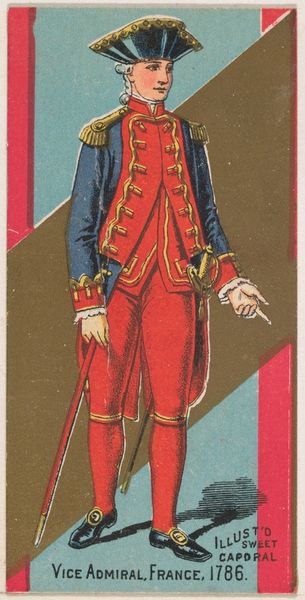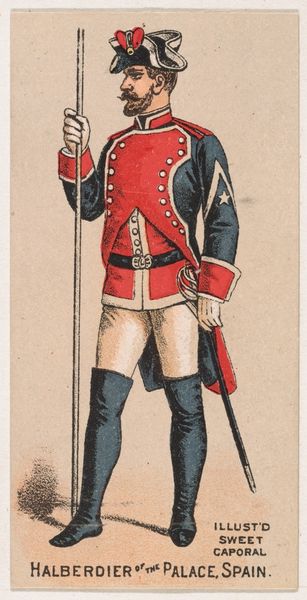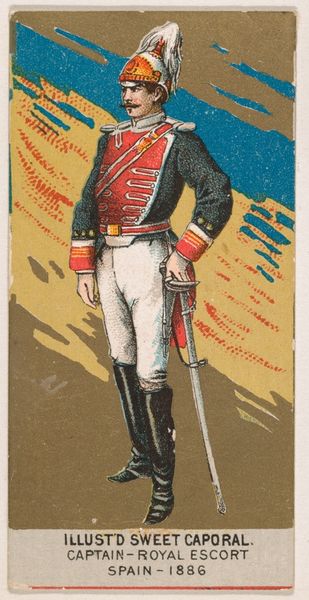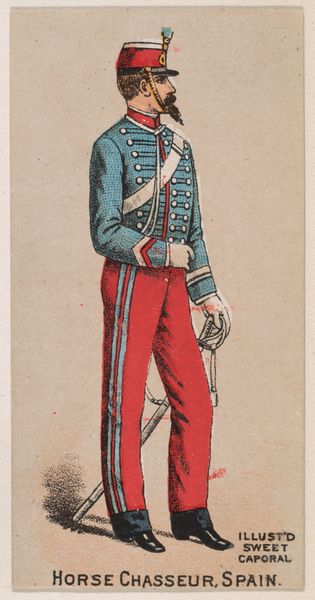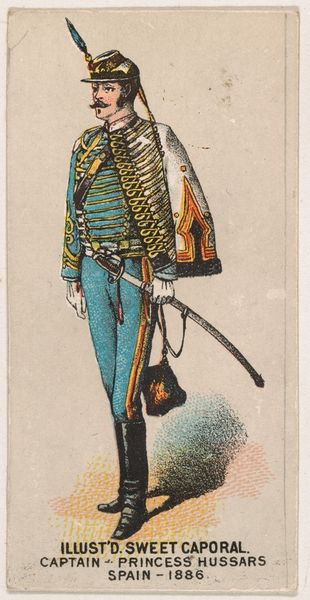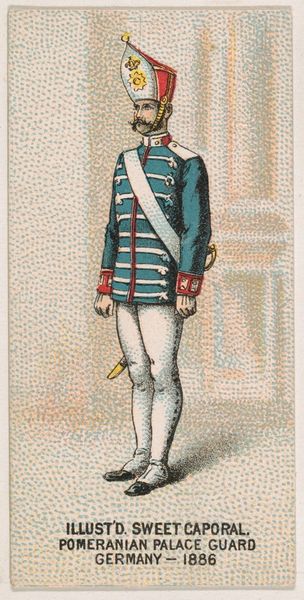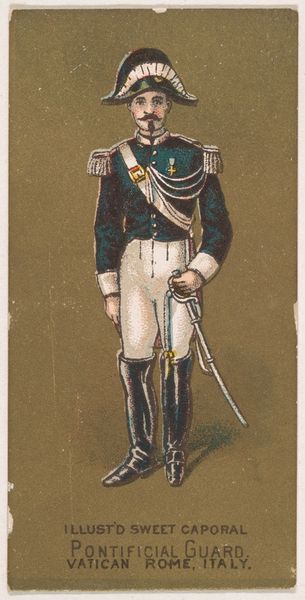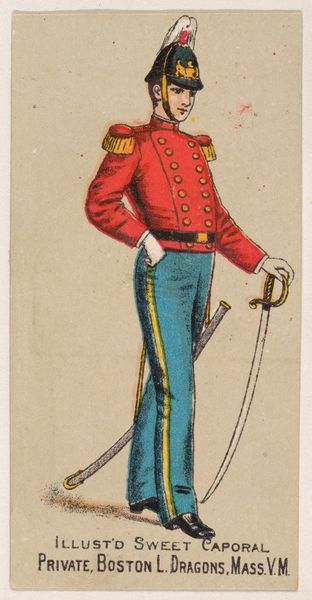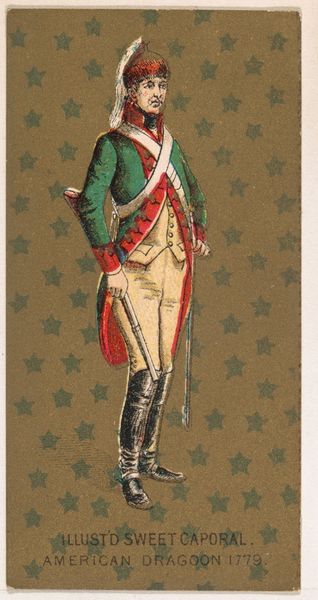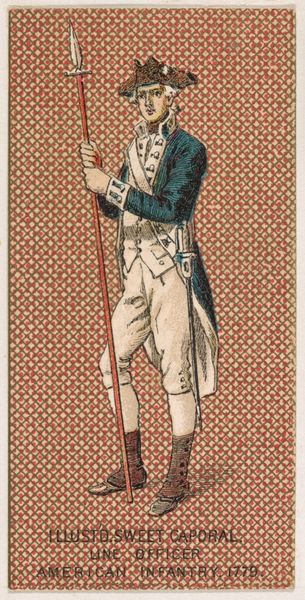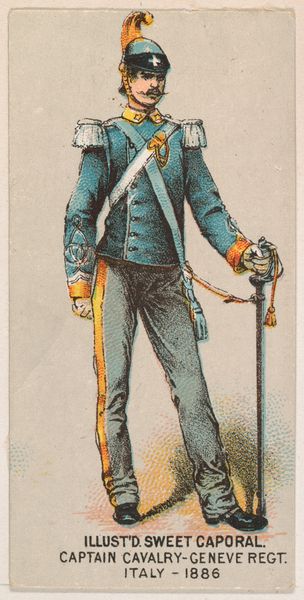
Major, French Guard, 1786, from the Military Series (N224) issued by Kinney Tobacco Company to promote Sweet Caporal Cigarettes 1888
0:00
0:00
drawing, print
#
portrait
#
drawing
# print
#
caricature
#
men
#
watercolour illustration
#
genre-painting
#
history-painting
Dimensions: Sheet: 2 3/4 × 1 1/2 in. (7 × 3.8 cm)
Copyright: Public Domain
Curator: What a find! This print, dating to 1888, comes from a series issued by the Kinney Tobacco Company, specifically to promote Sweet Caporal Cigarettes. It depicts a Major in the French Guard from 1786. Editor: I am immediately drawn to the composition; it’s such a flattened plane. The figure, while detailed, is undeniably two-dimensional. It makes me want to consider the interplay of line and color before even delving into historical context. Curator: Well, context is key here. The late 19th century witnessed a surge in these commercial images, reflecting both a growing consumer culture and a romanticized, often sanitized, view of historical figures. Who was represented, and how, reveals societal values. For example, focusing on military figures certainly played into prevailing nationalist sentiments of the time. Editor: True, but consider how the print itself uses color. The juxtaposition of the red accent against the gold ground. Then the subject’s blue uniform. These create visual contrasts. Is that tension significant on its own terms? Or is the colour purely an enhancement? Curator: It is important that we interrogate such representations, not as neutral images but as active participants in the construction of historical narratives. Think about how uniforms enforce hierarchy. What did French Guards signify? Authority, power, certainly masculine ideals. Consider, too, the medium: a mass-produced cigarette card, which means it's directly engaging with issues of class and accessibility to a luxury good. Editor: All valid points, and yet I'm still stuck on this flatness. Is it meant to reflect the rigidity of military life itself? The formal constraints on the body that are visually evident from posture alone. Or is it merely a function of mass production, which, in itself as you say, reflects a certain aesthetic choice based on technology available. Curator: That intersection, of artistic constraint due to the format intersecting historical ideas about discipline, becomes where meaning occurs. Editor: Indeed! A conversation I could certainly delve deeper into.
Comments
No comments
Be the first to comment and join the conversation on the ultimate creative platform.
